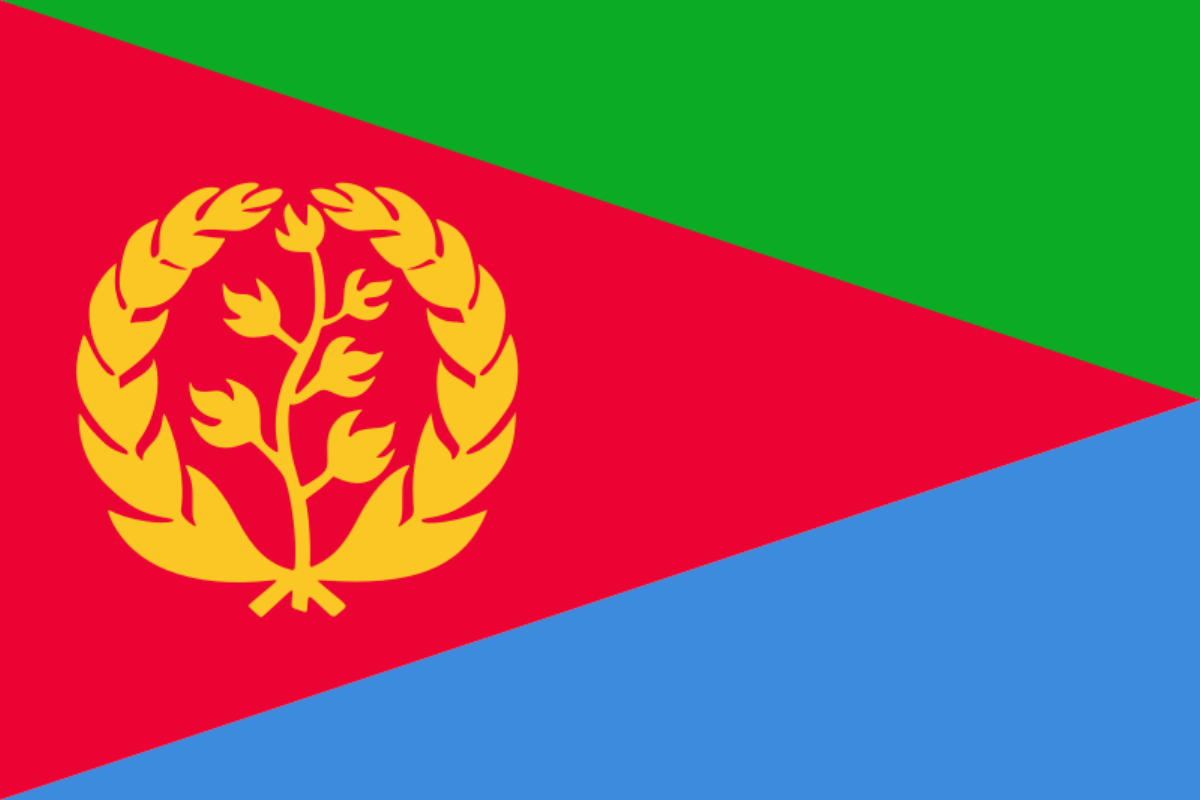The national animal of Eritrea is the Arabian camel. The Arabian camel is a very important national symbol and as adopted as the country’s national emblem in 1993. They are seen as very important parts of Eritrean national pride as well as the country’s more literal natural landscape and beauty.
Camels are and have been just as important as horses in many parts of the world including Eritrea.
They are important for transport both of goods and people, and in the deserts they call home they have come to be just as important as the sand itself in the sense people have of the landscape.
Let’s find out more.

What is the national animal of Eritrea?
The national animal of Eritrea is the Arabian camel, otherwise known as the dromedary camel.
Though Eritrea is an East African country, it is only a stone’s throw from the Middle East and countries like Yemen and Saudi Arabia.
Camels are native to Eritrea and have been used for a variety of purposes by humans over time and still continue to be vitally important to some local economies today.
They are large, even-toed ungulates, and they are tallest of the three camel species.
Adult males stand around 7 to 11 feet tall at the shoulder, though females are considerably smaller, at most around 6 feet tall.
Males typically weigh anywhere from 880 to 1,500 pounds, and females weigh at most 1,190 pounds.
They have a distinctive, long, curved neck and a narrow chest, and importantly only a single hump on their back—more on that later.
They are mostly active during the daylight and are highly adapted to life in the harsh desert environment.
They live in herds of usually around 20 individuals, led by a dominant male.
They eat desert vegetation and are able to lose as much as 30% of their water content, meaning they can do very well in a dry, desert environment.
They mate once a year during the rainy season, with the females bearing a single calf after around 15 months of gestation.
Interestingly, they have not occurred naturally for more than two thousand years. they continue to have a huge range across Africa and the Middle East, but are not really found in the wild except for some isolated feral populations.
They have been thoroughly domesticated by humans and played a very important role in the history of these parts of the world.
Why is the camel the national animal of Eritrea?
The camel is the national animal of Eritrea for a few important reasons.
On the one hand, they are seen as one of the most important animals in the country’s history.
Without them, travel across the open deserts would be extremely difficult if not impossible.
With horses, you would have much bigger problems with water supply, whereas camels are able to go for much longer periods without any water.
So, in some ways, the Arabian camel is a big part of the reason people were able to become so well-established at all in this part of the world.
They are also seen as symbols of Eritrean natural beauty.
Though they are domesticated animals, many do not think of them this way, and simply cannot disengage the image of the camel from the image of the open desert.
To the people of Eritrea, this is also true: the camel and the Sahara Desert are one and the same.
So, in many ways, it is a question of national pride.
Eritrea gained independence from Ethiopia in 1993 and it was at this time that they adopted the symbol of the camel as their national emblem.
Do Arabian camels have one or two humps?
The Arabian camel has one hump, and this is a dromedary camel.
Dromedary camels are camels with one hump, whereas Bactrian camels have two humps.
An easy way to remember is a D looks like one hump whereas a B looks like 2 humps. So Dromedary camels have 1 hump, (D) and Bactrian Camels have 2 humps, (B).
Bactrian camels are far more northerly in where they live, being found in inner Asia.
They, too, are domesticated, and there is a population of around 2 million.
Both species, then, have been very important to their respective environments, and to look at the two side by side you can see that there are many differences between them besides the hump. Bactrian camels are more adapted to colder climates with their thicker fur.
The main difference, though, is the humps: Arabian camels have one hump.
Do camels store water in their humps?
This is a common myth, unfortunately, though it has gotten a lot of traction and to some has simply become common knowledge.
This has been suggested as a way to explain how they survive for so long without any water.
But the truth is these humps store fat, and not water.
This fat storage does go a long way to helping in their survival, but it really does not have a great deal to do with their ability to survive without water.
This is the case with both Arabian camels and Bactrian camels.
So, the Arabian camel is also known as the dromedary camel, and this is the one-humped camel.
Bactrian, on the other hand, is the two-humped camel.
Camels are vitally important both symbolically and literally in Eritrea, and both in the modern day and historically.
They are among the most recognizable denizens of the desert and without them, human civilization in particularly harsh deserts may have had a much harder time getting established.

